Last Updated on June 5, 2025 by Maika Cotton | Published: May 18, 2020
Barcelona’s Gothic Quarter is jam-packed with fascinating history and hidden gems. Its winding streets, towering stone buildings, and unique shops and storefronts all have stories to tell from the city’s past. With its medieval alleyways, small squares, and secret corners, this is one area that you simply can’t miss.
Barcelona is the perfect city to explore on foot, as even a short stroll can take you through six centuries of architecture. Going on a Gothic Quarter walking tour allows you to confront the city’s history up front as you walk the same steps its residents have taken for hundreds of years. What’s more, it’s so easy to take a self-guided Gothic Quarter tour with our handy insider knowledge.
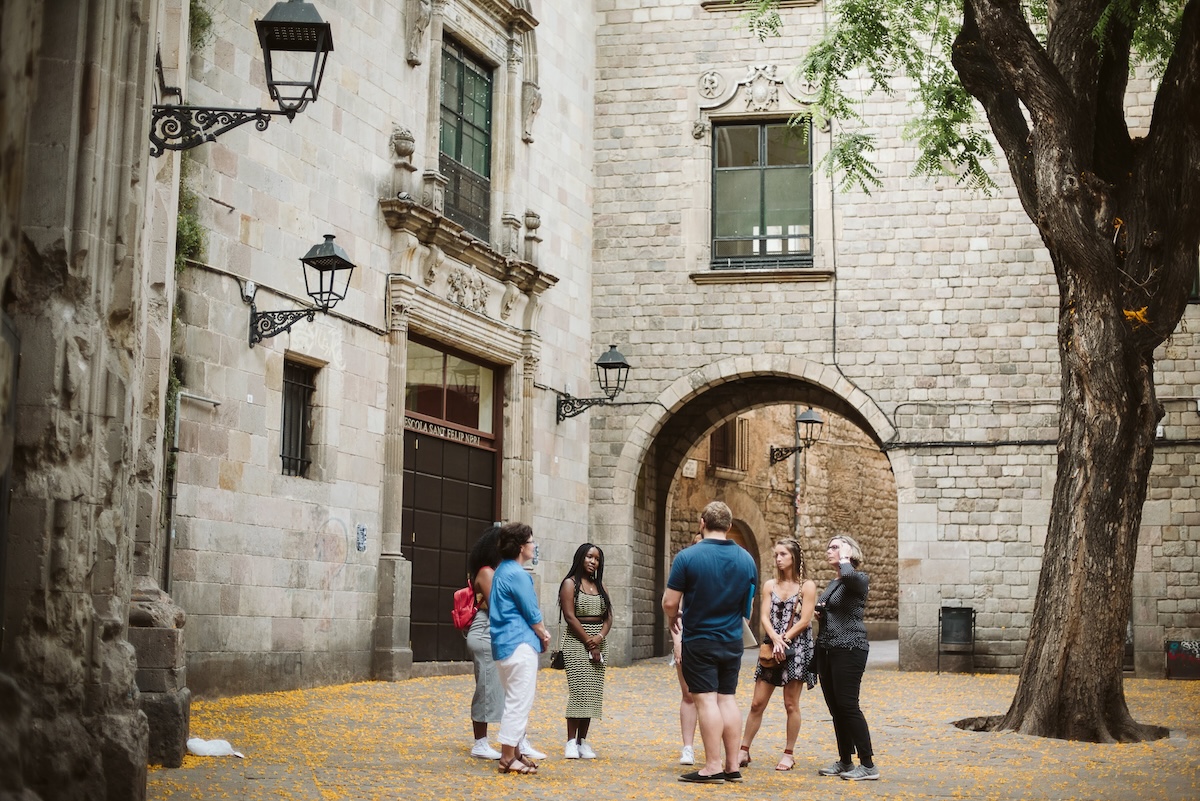
Discover Plaça Nova and the Cathedral
No trip through the Barri Gòtic would be complete without a visit to the Cathedral of Barcelona in Plaça Nova. Start your Gothic Quarter tour here by taking a walk around this imposing structure and then look up. In addition to traditional gargoyles on the roof, you’ll also find curious animals like unicorns and elephants.
Construction of the cathedral took place between the 13th and 15th centuries, but it got a facelift for the World Expo in 1888. If you walk around the right-hand side, you’ll see that its façade stops abruptly. This is because the city decided to save money by only renovating the parts of the building that would appear in photos.
The cathedral is beautiful inside as well. There are a variety of ticket options depending on what you want to see and do once inside.
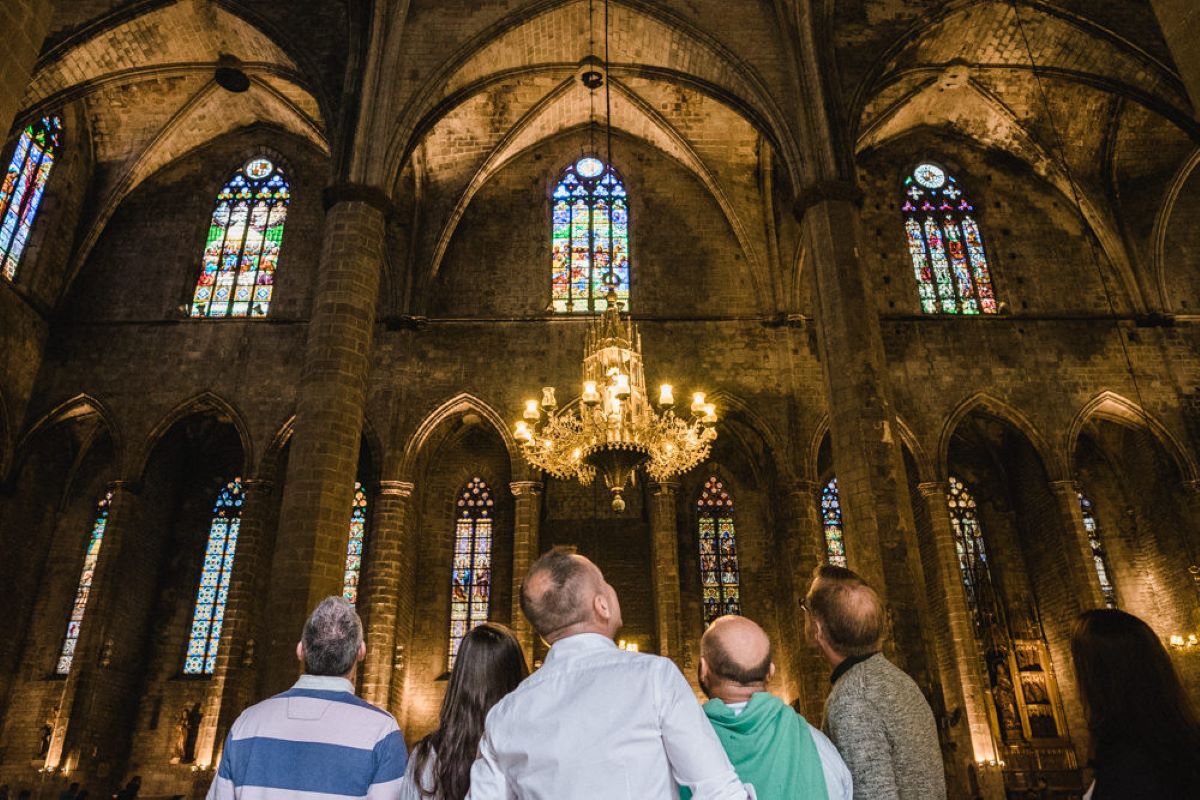
What to see in the Gothic Quarter next: Plaça de Sant Josep Oriol and Plaça del Pi
From Plaça Nova, head down Carrer de la Palla and sneak your way through the iconic narrow streets of the Gothic Quarter. After a few minutes, you’ll enter Plaça de Sant Josep Oriol.
This lovely square is home to the Basilica de Santa María del Pi. In years past, the wealthy residents of Vila de Gràcia would go to church here. While they worshiped, their drivers would hang out at Bar del Pi. This place has been open since the 1920s and previously served as a stable in the 18th century. In the 1930s, the Unified Socialist Party of Catalonia was founded here.
The masses gather at Plaça del Pi during the La Mercè festival to watch castellers climb and weave together to make impressive human towers. In addition to its colorful history, Bar del Pi is the perfect place to stop for tapas and a glass of vermouth or cava.
Plaça del Pi has plenty more to offer:
- If you’re lucky, your visit will coincide with the artisanal food market held here.
- Otherwise, grab something sweet at Granja Dulcinea (Calle de Petritxol, 2). Opened in 1941, this is one of the best places for chocolate in Barcelona.
After your sugar fix, head to the far side of Plaça de Sant Josep Oriol. Take Carrer de l’Ave Maria, then head down Baixada de Santa Eulàlia.
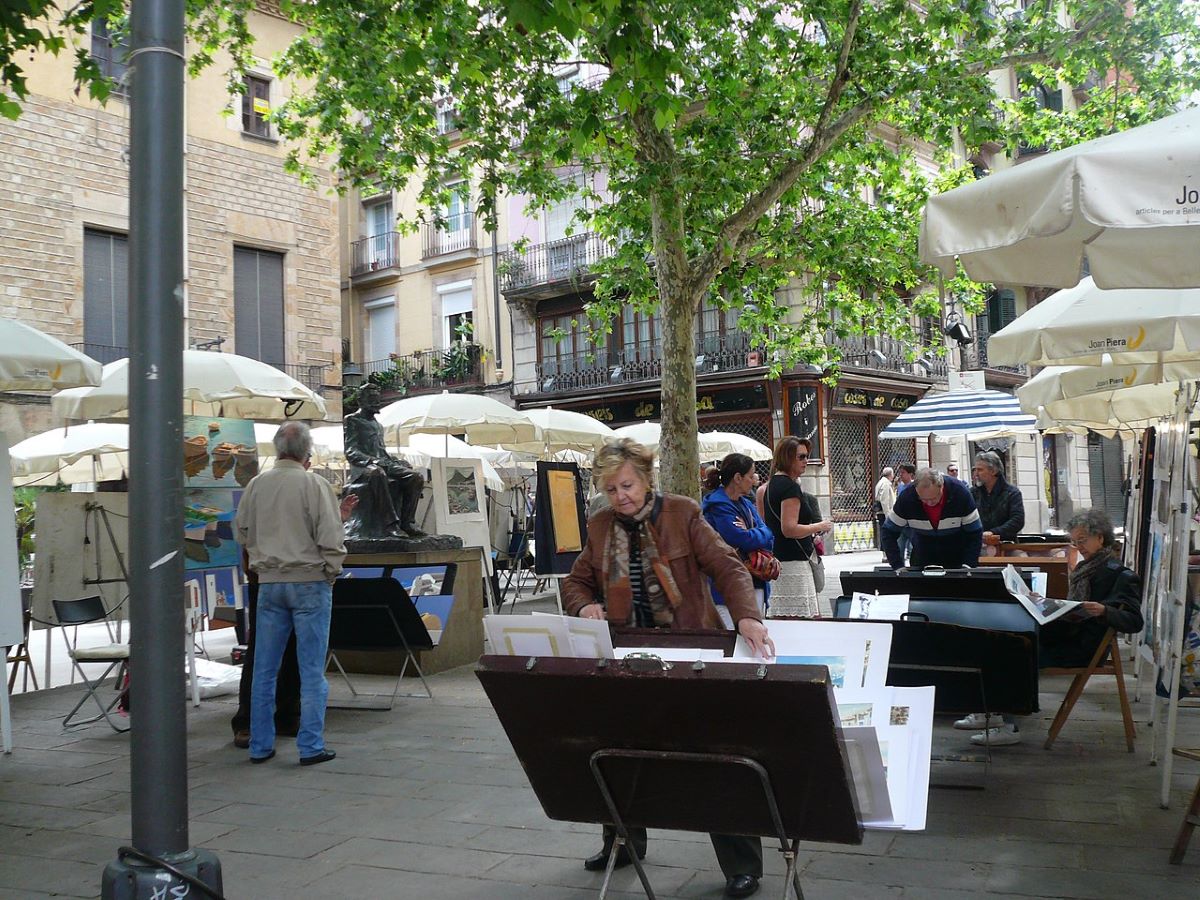
Continue your guided tour of Barcelona in Plaça de Sant Felip Neri
This is a more solemn stop on our tour of Barcelona’s history. Laid bare across this city’s beauty are harrowing reminders of its past, and Sant Felip Neri is the perfect example. At first glance, this square is peaceful and unassuming, with a small fountain and a baroque church. But if you look deeper, you’ll find pain etched into every stone.
In 1938, during the Spanish Civil War, Mussolini’s troops dropped bombs on civilian targets in this very plaza. Several schoolchildren were killed after seeking safety in the shelter below the church, which collapsed. Cracks and chips still cover the facade of the Església de Sant Felip Neri.
Today, the square is a school playground during the day, the terrace for a hotel restaurant in the evening, and a local hangout in the early hours of the morning. The visible damage to the church’s exterior, especially when combined with the sound of children playing, serves as a stark reminder of what can happen when society falls apart.
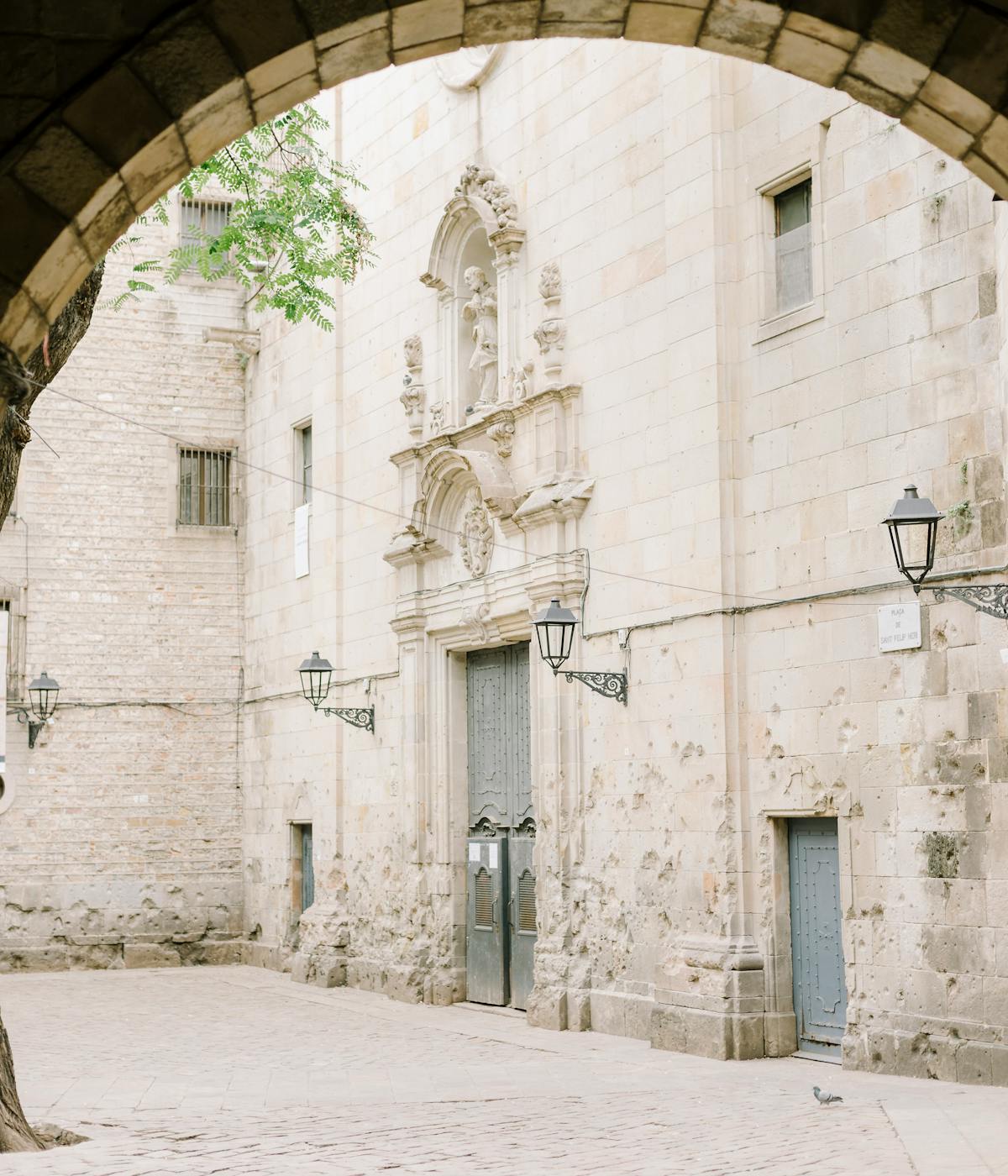
Plaça del Rei: Where your self-guided walking tour of Barcelona lets you step back in history
Head down Carrer de Montjuïc del Bisbe, then take Carrer de la Pietat through the General Archive of the Crown of Aragon. Upon exiting the archives, you’ll find yourself in Plaça del Rei, home to an interesting story:
- Legend has it that the steps in the left corner of this square are where Christopher Columbus presented his bounty after discovering America. Whether or not this story is true, Columbus’ findings had an important impact on Barcelona.
- Until this point, it was the prosperous capital of the powerful region of Catalonia. But after trade began with the Americas, Andalusia became the peninsula’s trading center.
- Due to this, along with the Spanish Inquisition and various plagues, Barcelona fell into neglect and didn’t regain its status until the Industrial Revolution.
However, we have Barcelona’s bad fortune to thank for the Gothic Quarter. If money had continued to flow, the structures you see today would have been knocked down to make room for more modern and fashionable buildings.
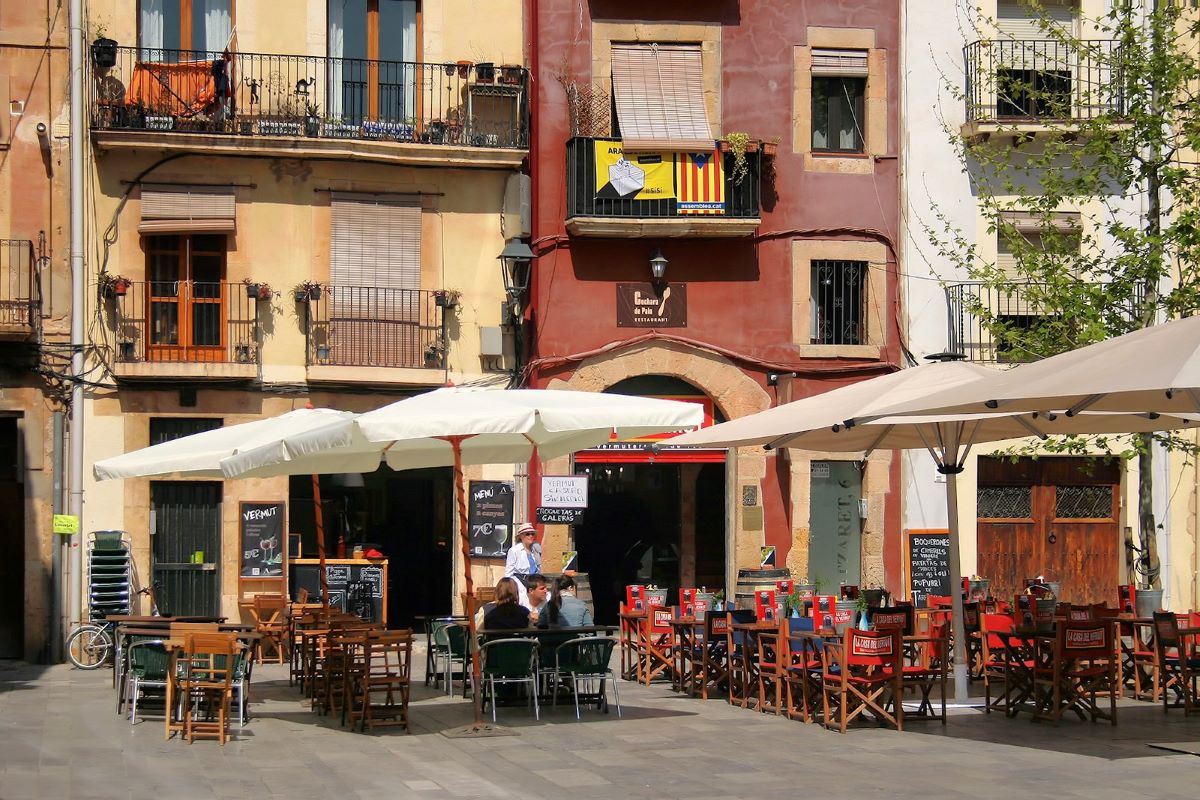
Eating in Barcelona on a budget: Plaça de Sant Jaume
From Plaça del Rei, take Carrer del Veguer and pass the MUHBA history museum. Crouch down to look through the low windows at the remains of Roman Barcelona. You can even explore them under the cathedral.
If you’d rather stay above ground, follow Baixada de la Llibreteria to Plaça de Sant Jaume. This has been the political center of Barcelona for 2,000 years. It’s often a venue for demonstrations and peaceful protests.
We’ll finish this self-guided walking tour of Barcelona with a stroll to the shoreline, and where to eat in the Gothic Quarter:
- On your way to the water, stop at Bodega La Palma (Calle de la Palma de Sant Just, 7) for patatas bravas and croquetas. Today it’s known for tapas, but it used to be a famous Bohemian hangout frequented by Picasso and his contemporaries.
- Just five minutes away, you’ll find La Plata: a local institution beloved for its food, atmosphere and staff. The manager, Pepe, is there every day. Grab a table or a spot at the bar and enjoy the fried fish, tomato and onion salad, butifarra and, house vermouth.
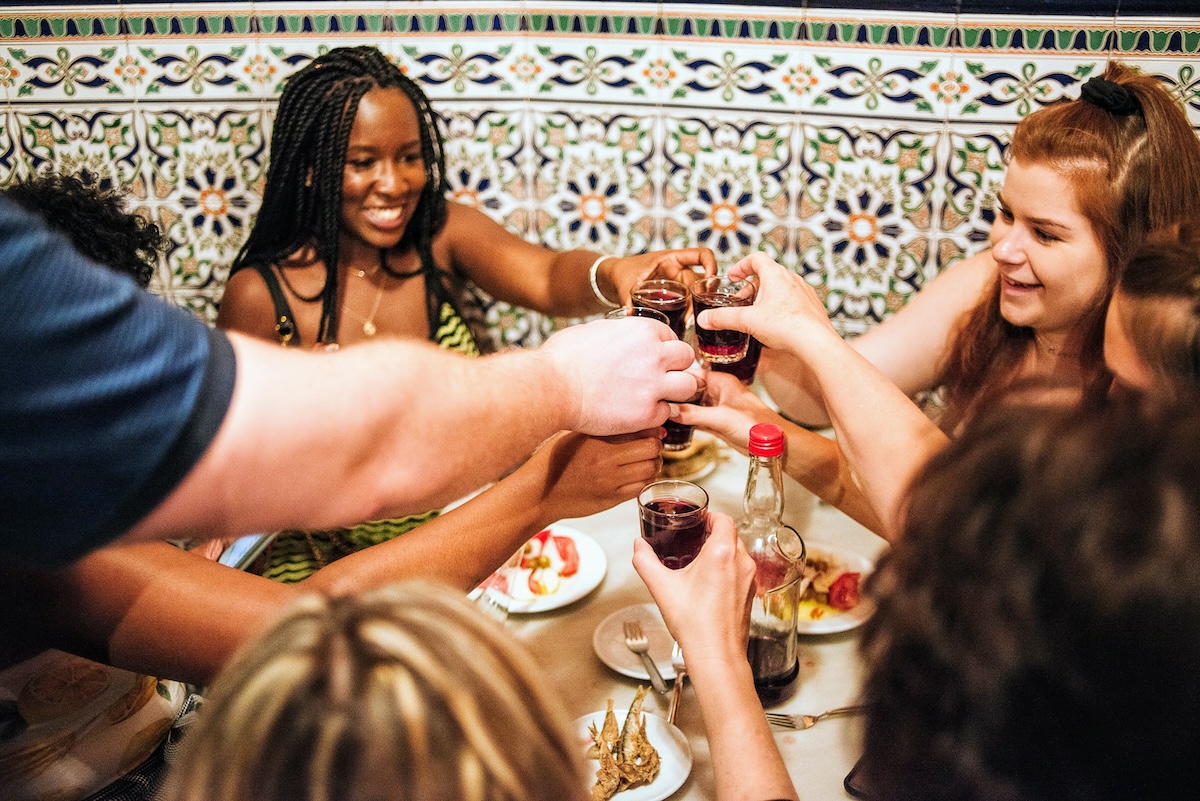
Update Notice: This post was updated on June 5, 2025.
Want to discover the real Gothic Quarter away from the hoards of tourists? Why not join us on our Barcelona Tapas, Taverns & History Tour where our knowledgeable guides will take you through the Gothic Quarter to authentic tapas bars, explore Roman to Moorish architecture, and uncover secrets of Barcelona’s past.
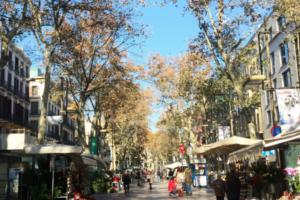








Most helpful
Thanks so much for reading!